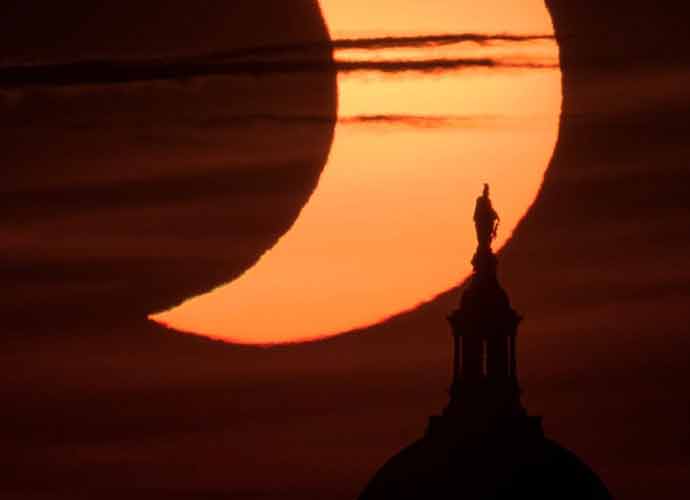New Photos From The ‘Ring Of Fire’ Eclipse Revealed
An unusual sunrise spread across the northern hemisphere last week, as a solar eclipse coincided with early morning for much of Siberia, Greenland, and the eastern half of Canada. Though some lucky Americans around the Great Lakes no doubt witnessed the full totality of the eclipse, or the “Ring of Fire,” most on the eastern seaboard awoke to a fiery crescent that painted the sky in brilliant hues of red and orange.
Two NASA staff photographers waited in the cool morning of Washington D.C. and surrounding areas in order to capture photos of the crescent as it rose above important landmarks. Bill Ingalls, who camped out in Arlington, was able to photograph the partial eclipse as it illuminated the Capitol building in blazing color. Meanwhile, Aubrey Gemignani sat along the shore of Lewes Beach, Delaware, where she captured the rising sun’s pink ribbons of light over the water while it hovered above the Delaware Breakwater Lighthouse.
In places like New York City, the eclipse was partially obscured by clouds, to the chagrin of those that sat atop the Empire State Building (who had paid $114.81 to be there). However, it was still a dazzling sight, with 73% of the sun obscured by the moon.
This excitement over experiencing an astral phenomenon seems to have been shared by both scientists and spectators alike. Science writer, Dennis Overbye, described the universality of the feeling in a statement. “In order to experience the terrible and beautiful effects of this moment of cosmic geometry, some astronomers were organized enough to book airplane flights into the zone of maximum darkness, or watch from sky-high perches in Midtown Manhattan. Others of us pried ourselves and our children out of bed before dawn, hoping against hope that dire weather forecasts were wrong and we would all experience a sense of cosmic citizenship,” he wrote.
RELATED ARTICLES
Get the most-revealing celebrity conversations with the uInterview podcast!








Leave a comment